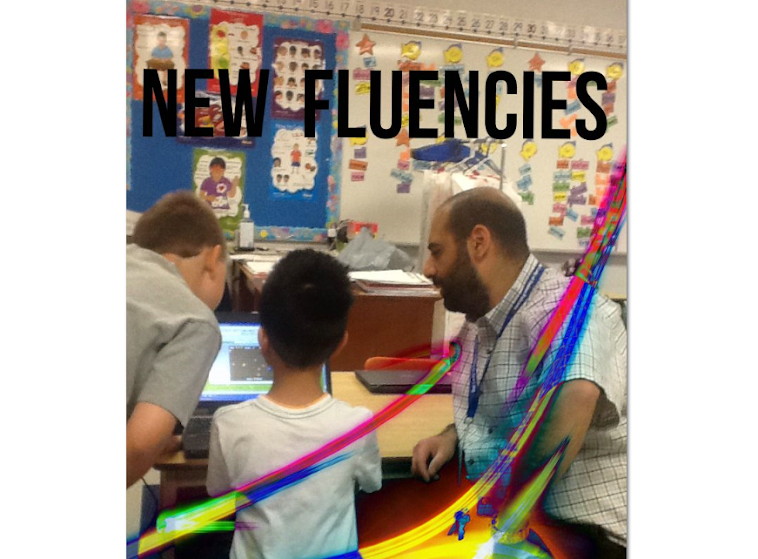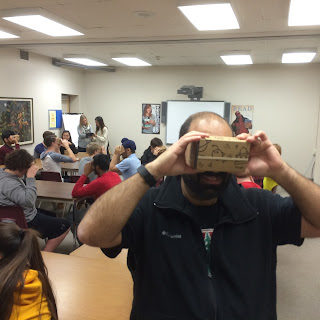With the new year under way I wanted to take some time to reflect on the last 4 months and report on the progress and setbacks of our journey to bring our thinking to life. My last post, wishing everyone a Merry 3D Christmas, was our end to 2015 and it was a great way to wrap up the year. I won't talk too much about it because it is a
recent post but it was a great culminating activity to end 2015. I had to sit on my hands to not post it sooner than Dec 24 :)
In Science we had gone on a field trip to the Laurel Creek Conservation Area where we explored animal habitats. One of the activities the students participated in involved learning about animal skulls and teeth and how those characteristics help the animals survive. Many of the students started thinking about the knowledge they had gained and how they could apply what they learned in order to create their own animal skull. They talked about their ideas feverishly and wanted to start getting their ideas out of their heads and into Tinkercad to make their thoughts come to life. It was great to hear the students talk about their ideas and how they were connected to what they learned on the trip. Some of them planned out their thinking and what they wanted to do and other students just started creating and then demonstrated their understanding based on what they had learned. They all had the same goal but didn't all go about getting there the same way. As they worked on creating an artifact of their learning I questioned them, provided them with feedback, and explored their wonders with them.
Here are some photos of one of the skulls that were printed:
As you can see, the student had some issues with the top teeth of his skull. This led to questions about how to design in a way that would avoid this. One student suggested designing the top and bottom of the skull separately and then putting them together after printing. Another student suggested having more of a closed mouth where top teeth and bottom teeth could overlap in ways that would allow the printer to do its job but not ruin the aesthetics of the artifact. Lots of great discussion and new learning, both of which are a teachers dream!
We used social media to tweet the Conservation Area about the skull that was created and they asked if they could have a photo. This is what we sent them:
We tried printing other skulls but had some difficulty. Students hadn't corrected the issue with the top teeth so the printer wasn't able to create an artifact that was recognizable. This also led to many printer jams and a lot of wasted time. The designs would take close to two hours to print and we tried not to print anything when we weren't in the classroom. This didn't leave us with as much time as we thought we had! Needless to say, time is a big factor and is needed when printing our work. This new learning came in handy when we designed and printed our Christmas tree ornament and allowed us to create what we had envisioned and then shrink our artifact to a reasonable size that would reduce print time. It was one of our finest hours.
In Social Studies we were learning about Political and Physical Regions of Canada. As we discovered and talked about the various physical regions the students thought it would be cool if they designed their own - based on the information they got from me and their own research (mostly web based). They were fascinated by the Western Cordillera and started expressing THEIR thoughts and ideas. Again, this was wonderful for me to see and hear. Students got themselves together into groups and used their talents and gifts to work together towards a goal that they had established. Here are some samples of their work:










Lots of great conversation/discussion before the printing and lots more after the printing. The students treat their creations like they are valuable minerals. I shouldn't joke too much because to them, these creations mean a lot. They truly are artifacts of their learning - that what they were interested in, thought about, and talked about could be brought to life using the right tools to make it happen.
What I haven't mentioned in this post yet is all the talk I hear when students are working on designing their creations. They talk about measurement, proportion, grid location, shape, spatial orientation, and design, to name a few. They are taking what they know (and what they don't know) and converging all of it into a focused beam of energy to make their ideas a reality.
Before the Science and Social Studies, we had some fun with our learning in Mathematics. You can read more about that experience
here. The students did some amazing work around creating representations of 4 digit numbers. It was a success in so many ways - design and printing.





And then there was our very first venture - learning to use Tinkercad. We were talking about Rocks and Minerals in Science and the task was to create your very own Mineral!! A fun activity that would allow the students to demonstrate their learning. This proved to be a bit much for all of us. We ended up retreating and used Google Drawing to help us win our battle. I
wrote about our experience - it was early on in our journey and looking back on it, very valuable to our development and understanding around design thinking. We didn't end up printing anything but what the students created was fantastic. They showed their competence with respect to Google Apps for Education (GAFE - particularly Drawing), which has proven to be a solid foundation for the 3D work we are doing today.
Even though its only been 4 months, it seems as though we have been at this for a lot longer. As I said above, Google Apps for Education has helped us build a solid competence from a technological and design standpoint. I saw this capacity grow in previous years with my grade 2 classes and that is where the idea of using 3D technology came to me. The evolution I envisioned is coming to fruition which excites me for the future. I look forward to continued sharing in the coming months as we learn new things and allow our imagination to run wild to bring ideas to life.
























